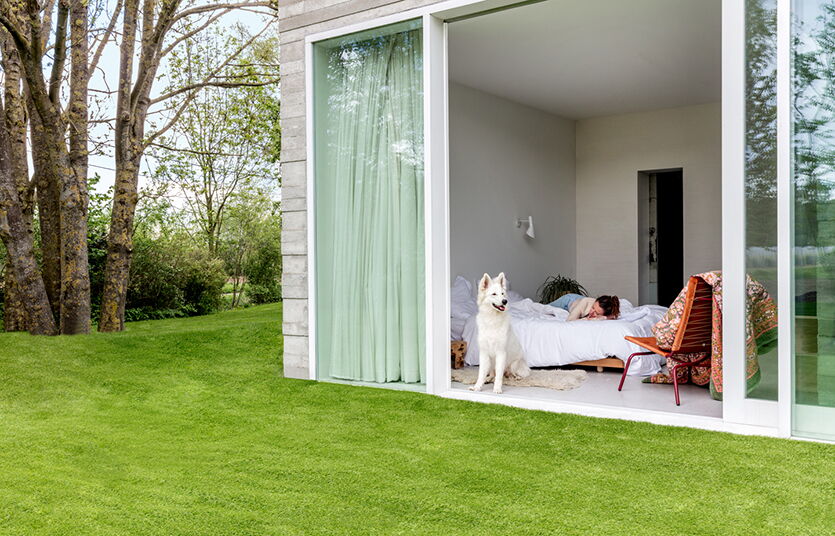Checklist: which artificial grass should you choose for your lawn?
With a vast array of artificial grass solutions to choose from, it’s not always easy to pinpoint the perfect type for your project. This checklist might help.

Six questions to ask yourself
A quick online search is enough to make it clear that there are numerous types of artificial grass. Deciding on the best option for your project can be a time-consuming and daunting task. Our advice is to go about it in a structured manner. Answer 6 key questions for yourself and then contact a trustworthy supplier who can deduce the right type of artificial grass for your needs and wishes.
1. How much foot traffic are you expecting?
This question is as simple as it is important. If you have children horsing around or playing football on your lawn, strong blade resilience is crucial. So, avoid extremely long pile heights. Otherwise, you risk ending up with run-down artificial grass or even broken blades. If your lawn is mainly for aesthetic purposes, resilience and pile height are less of an issue.
2. Which colour(s) do you prefer?
‘Green’ is not specific enough. There are many shades of green, such as olive, shamrock and forest. You can even add beige or brownish tones. Want some moss visible among the blades? Done deal. Make sure to ask for samples and place them in the area where you want your turf to be laid, because lighting conditions can alter the perceived colour.
3. How long should your artificial grass be?
As you might have noticed, pile height can differ greatly. Some artificial grass types have blades that are just 15 mm long, while other types can reach the 50 mm mark. Again, the intended use of the area is key. Long looks more natural and feels softer, but isn’t always ideal for heavy foot traffic.
4. How dense should your lawn be?
The greater the pile density, the more even or ‘perfect’ your grass will look (particularly if seen from above). That’s why more and more people go for limited pile densities: wider gauges look more random, thus more natural. The challenge for products with wider gauges, however, is to offer the same resilience levels as dense artificial grass. Dense turf tends to be more resilient because the blades help each other to stand up after being stepped upon.
5. What is your budget?
Before you answer, keep this in mind: the only artificial grass that’s more expensive than expensive artificial grass is cheap artificial grass. Although you might pay a bit more at first, you’re always better off with certified artificial turf from a renowned European producer in the long run. Also think twice before attempting to save on installation costs by doing everything yourself.
6. How important is technological quality?
We end with the easiest question, because the answer should be ‘very important’. Make sure you opt for a homogeneous polyurethane (PU) coating, which guarantees the perfect seal for high-end artificial turf. Additionally, the backing should be made of PU. This way, you’ll be able to enjoy your artificial grass for up to 15 years.
Are you wondering which type of artificial grass matches your responses best?